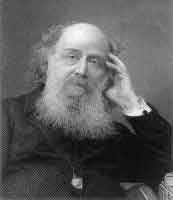A Discrete Geometrical Gem
Posted August 2003.
1. Introduction
Some easy-to-state problems in mathematics stand out, despite their seeming simplicity, because initially they eluded solution. An example of such a problem is due to the English mathematician James Joseph Sylvester (1814-1897).
Here is the question that Sylvester originally raised in 1893 in a journal known as the Educational Times:
Prove that it is not possible to arrange any finite number of real points so that a right line through every two of them shall pass through a third, unless they all lie in the same right line.
Sylvester used the term "right line" for straight line. Furthermore, two points which are the only two points on a line of a point/line configuration C have come to be known as ordinary lines. Today, we would state the result, in a way similar to the way Paul Erdös (1913-1996) did when he made the conjecture, about 40 years later:
If a finite set of points in the plane are not all on one line then there is a line through exactly two of the points.
Erdös made this conjecture, apparently unaware of Sylvester's earlier question, and the conjecture appeared in print in 1943. This led the Hungarian mathematician Tibor Gallai (whose name was originally Tibor Grünwald, and who lived from 1912 to 1992) to provide a proof (in the "dual" formulation of the problem where the role of point and line are interchanged) that the conjecture actually held. Many years later, Erdös expressed his surprise that the Sylvester problem went unanswered for so many years. Problems often look easier in hindsight than when they are staring you in the face. My goal here is to show how one seminal problem can open up many avenues of ideas, which even to this day are still being explored.
Joseph Malkevitch
York College (CUNY)
Email: malkevitch@york.cuny.edu
- Introduction
- Planar point configurations
- Some ramifications of the Sylvester-Gallai Theorem
- Generalizations and adding color
- References
Welcome to the
Feature Column!
These web essays are designed for those who have already discovered the joys of mathematics as well as for those who may be uncomfortable with mathematics.
Read more . . .
Feature Column at a glance



